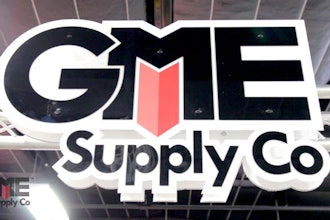MOBILE COMMERCE STRATEGY:
A Case for Responsive Design
110 North 5th Street, 8th Floor
Minneapolis, MN 55403
1.866.746.0377
612.367.8600
www.insitesoft.com
INSITE SOFTWARE: ECOMMERCE STRATEGY CONSULTING
COPYRIGHT © 2013 INSITE SOFTWARE / P 866.747.0377 / WWW.INSITESOFT.COM2
INTRODUCTION
Around the world, mobile commerce continues to grow as online merchants recognize the power that it brings to
a comprehensive Commerce strategy. InternetRetailer.com published research by Forrester Research, Inc. that
estimates by the year 2016, mobile purchases made on smart phones will total $31 billion dollars, up from $10 billion in
2012. Additional growth potential within mobile commerce may be possible as this estimate does not appear to take
purchases made on tablet devices into account.
As more and more people transition to having smart phones in their pockets and tablet devices in their bags at all
times, mobile commerce presents business-to-business (B2B) organizations with a clear way to drive sales growth.
Without a functional mobile commerce strategy as a component of an overall Commerce initiative, manufacturers and
distributors are likely to lose an increasing number of sales to mobile-optimized competitors in the coming years. With
this in mind, it is essential that B2B organizations develop and deploy a comprehensive mobile commerce strategy
sooner rather than later.
WHY MOBILE COMMERCE MATTERS
If you are wondering what drives an individual to
purchase using their smart phone or tablet device and
why mobile matters for B2B organizations, you aren’t
alone. Most B2B organizations question whether mobile
commerce is applicable to their business model and, if
so, how it can best be used to drive results.
Internet Retailer found that the top four reasons that
consumers buy via mobile commerce include on-the-
go convenience (63%), availability of special offers and
coupons (52%), finding the best deal (48%) and product
not available in stores (41%) (Source: InternetRetailer.
com) What does this mean for B2B organizations that
sell their products via eCommerce? Let’s look at each of
the cited reasons individually.
• On-the-go-convenience. The number one
reason that online shoppers pick up a mobile
device to make a purchase is the at-the-fingertips
convenience that mobile commerce provides
them. 43% of US mobile phone users already
own a web-enabled smart phone and 58% of
all new phones sold today are smart phones
(Source: InternetRetailer.com). Coupled with the
fact that tablet PC and iPad sales are climbing,
these statistics indicate that a sizeable number
of consumers effectively have a computer in
their pocket or bag at all times. The widespread
availability of these devices and their steadily
increasing market penetration suggests that more
and more business and personal purchases will be
made on them. In addition, a B2B organization’s
salesforce can effectively utilize mobile commerce
to drive sales and engage with customers while
in the field by providing immediate feedback
on pricing, shipment status or order history. As
mobile purchases increase, companies without
mobile-optimized sites are likely to lose business
to competitors that are able to meet today’s mobile
buyer’s needs.
• Available special offers and coupons. Shoppers
love a good deal, regardless of whether the
purchase is for business or personal use, and
in today’s economy, businesses are paying an
increasing amount of attention to ways that they
can cut costs. Online purchasing offers B2B
organizations a significant way to save money via
lower purchase prices, and in some cases, avoid
state sales tax. Organizations that leverage the
online shopper’s drive for an exceptional deal
with special incentives, offers, and coupons will
experience a greater channel adoption rate.
• Easy to compare prices and find the best deal.
On-the-fly price comparison is one of the most
powerful consumer-focused benefits of mobile
commerce. In today’s eCommerce driven society, a
person can be standing in a shoe store wearing a
specific make and model of shoe and use a smart
phone or tablet PC to check pricing online and
purchase the same shoes—often for less. With this
phenomenon in play, those B2B organizations with
physical store locations must remain cognizant
COPYRIGHT © 2013 INSITE SOFTWARE / P 866.747.0377 / WWW.INSITESOFT.COM3
of how competitors such as AmazonSupply.com
or Google Shopping for Suppliers are promoting
and pricing the same or like products. Likewise, it
may be necessary to take specific actions such as
email promotions or guaranteed pricing to ensure
that as few sales as possible go to a competitor.
Even if it doesn’t appear to be the case now, B2B
organizations are cautioned that their current
customers are indeed shopping online. They must
take steps now if they wish to remain relevant and
avoid the “showrooming” phenomenon that shook
some B2C companies.
Products not available in-store. In a day and age
when nearly every consumer has ready access
to a mobile device capable of facilitating mobile
commerce, it is essential that an organization’s in-
store and online strategies consistently focus on the
customer. Organizations with local stores or dealer
locations where a customer might be left stranded
while searching for a specific product should consider
utilizing in-store signage that directs customers to an
online site for obscure or out-of-stock products. If an
organization only sells its products online, it should
make sure that its website site is optimized to pull up
when a shopper searches for a competitor’s products
to secure any “stranded customer” sales that arise from
the competition’s showroom.
Mobile commerce adoption is growing and shows no
signs of stopping anytime soon. B2B organizations with
active Commerce initiatives need to think about how
mobile commerce will affect their businesses—positively
or negatively—as it certainly will.
CHOOSING A MOBILE COMMERCE FORMAT
While mobile commerce requires a web presence
and works in concert with a traditional eCommerce site,
it is important to recognize that having an Commerce
strategy does not replace the need for a comprehensive
mobile commerce strategy. Mobile commerce has
unique requirements that must be addressed if an
organization is to experience any success in the
channel. By far the largest strategic mobile commerce
question that an organization faces is whether to:
• Invest in responsive design; a technique that
uses a singe code base and a single set of web
content that detects the screen size of the device
that is requesting the page and delivers the page
optimized to fit the screen.
• Build a device-specific mobile application such as
one for the Android or iPhone platforms.
• Build mobile sites for each major mobile device
platform individually using browser specific
requirements.
While each of these mobile commerce strategies can
be effective, building platform-specific applications
and developing browser-specific versions of a
traditional website can result in a higher total cost of
ownership over the life of the project. By comparison,
a responsively designed site ensures that the greatest
number of mobile users will be accommodated
automatically and is the most cost-effective solution in
the long run.
Technology is continuously evolving. The applications,
devices and browsers that are popular today are not
likely to be the same applications, devices and
browsers that will be popular six months from now.
Optimizing a commerce site to automatically recognize
a visitor’s mobile device ensures that they get the
information they need in a format that works on the
device they are using.
Additionally, once an organization’s commerce site is
optimized for the various mobile browsers, additional
browsers can be added and changes can be made to
the necessary code in one central location rather than
in disparate applications or mobile sites. While this is
not the least expensive option, optimizing a traditional
website to recognize various mobile browsers and serve
up the most appropriate content automatically is the
solution that is most likely to ensure mobile commerce
success.
RESPONSIVE DESIGN TO OPTIMIZE YOUR
ECOMMERCE SITE FOR MOBILE
Mobile commerce requires more than a smaller
version of an organization’s traditional eCommerce site.
To be successful, mobile commerce demands
a unique site design, page format, and way of
presenting product content that works well within
the confines of mobile devices. It must also take into
account the shortened attention span of the mobile
consumer. Once a mobile commerce-optimized
eCommerce platform is selected, there are three key
guidelines to consider for mobile site success:
COPYRIGHT © 2013 INSITE SOFTWARE / P 866.747.0377 / WWW.INSITESOFT.COM4
• Provide “miniaturized” content. Mobile
commerce’s smaller format demands that an
organization reconsider eCommerce content before
deploying a mobile site in order to assure maximum
effectiveness.On-the-go mobile users demand
immediate access to the most essential information,
so break site content into small, digestible chunks.
Headlines and calls to action should be powerful
and concise. Supporting copy should cut to the
chase and provide the best information up front.
Limit page length to avoid forcing mobile site
visitors to scroll down too far on their small screen.
• Make it easy to use. Human beings tend to over
engineer their creations with the idea that if a little
of something is good, a lot of it must be better.
Mobile commerce is no exception. Considering
the small screen format of the average mobile
device and the diminishing attention span of the
average mobile device user, a simple and highly
intuitive user interface is essential for mobile
commerce success. Overall site design, including
specifics such as look and feel, images, color
scheme, and font choice; and site functionality such
as navigational structure and how buttons and
menus function should be understated and easy
to use. On-site processes, such as adding items
to a cart and checking out should be reviewed
and streamlined to make the mobile commerce
shopping experience as simple as possible.
• Include essential links. Mobile commerce is most
effective when a site is automatically served up in
the most appropriate format for the mobile device
being used. That said, there are also times when
a site visitor might wish to bypass the mobile
optimized site and view the traditional site instead,
in spite of the small screen format. Consider hyper
linking from a mobile site to the corresponding
traditional site from the bottom of each mobile site
page. Likewise, consider including a direct link to
support in the same spot.
THE TAKE AWAY
As companies quickly evolve to include mobile
commerce as a part of their overall Commerce
strategy, taking into consideration the long-term cost
of ownership of the approach is a very important
assessment. Adopting a single platform that
supports multiple sites using responsive design is a
recommended consideration. Without an integrated
mobile commerce strategy that compliments traditional
Commerce, B2B organizations risk losing sales to mobile
commerce optimized competitors in the coming years.
Putting a strategic mobile commerce strategy in place
now ensures they will secure industry leader status as
well as position them for strong growth over the coming
years.
ABOUT INSITE SOFTWARE
Insite Software is the leading eCommerce and shipping platform provider for manufacturers and distributors requiring
B2B, B2C, and mobile solutions. Approaching 1,000 customers globally, InsiteCommerce™ is used by many leading
companies for end-to-end eCommerce across their dealers, franchisers, stores, contractors, consumers, and others.
Many of Insite’s customers also leverage InsiteShip™, which is an internationally enabled supply chain shipping solution
to gain efficiencies in shipping and delivery of products. Both enterprise offerings are fully integrated with the leading
ERP, content management and many other cloud platforms. Learn more at www.insitesoft.com and connect with us via
Facebook, LinkedIn and Twitter.
Mobile Commerce Strategy: A Case for Responsive Design
If you are like most B2B organizations, you may question whether mobile commerce is applicable to your business model and, if so, how it can be best used to drive results. Don't miss the complimentary white paper that explains how mobile commerce affects your B2B business and steps you can take now to integrate it with your existing site. Learn how to choose the right mobile commerce format, incorporate responsive design, and prepare content for optimal results that help you position your business for strong growth over the coming years.
Latest in Home
BlackHawk Adds McNutt as Northeast Region GM
September 16, 2025
Ferguson Reports Strong Results to Finish '25
September 16, 2025
Wesco Invests $10M in Procurement Software Startup
September 15, 2025


















